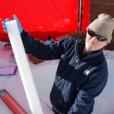International collaboration identifies potential threat to water quality
A major study has identified urbanisation and climate change as future threats to drinking water quality.

Showing 461 - 480 of 1162 results
A major study has identified urbanisation and climate change as future threats to drinking water quality.


A groundbreaking international study has provided new insights into global fossil methane emissions, using innovative multi-isotopic atmospheric measurements.
Two ANSTO scientists were part of a research team led by the University of Wollongong, who are finalists for the 2019 NSW Environment, Energy and Science (DPIE) Eureka Prize for Environmental Research.
ANSTO expertise focused on understanding of reduced water levels at Thirlmere Lakes in three year collaborative project
MABI instrument can determine both the concentration and source of black carbon pollution in the atmosphere.
The ARC Centre of Excellence (CoE) for Green Electrochemical Transformation of Carbon Dioxide, GETCO2, will support innovative approaches to carbon capture.
An ANSTO radiochemist has been awarded a scholarship to carry out research at the world-renowned Sloan Kettering Cancer Center in New York.
On behalf of ANSTO thank you for your interest in our tours. We hope your visit to ANSTO will be both enjoyable and informative.
Groundwater experts from ANSTO and UNSW have led a collaboration of Australian and American researchers to analyse the composition of deep, very old groundwater and develop a new conceptual framework that describes the degradation of carbon over time in the subsurface.
PNG researcher provides a progress update on an aquaculture project to improve the industry and benefit the local population